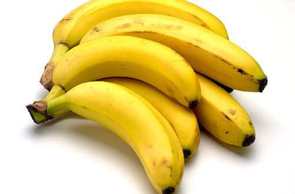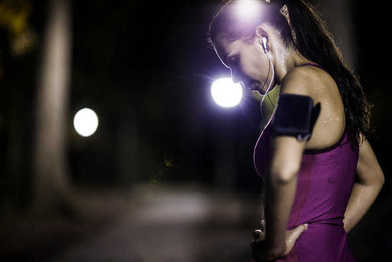
Photo Credit Jupiterimages/Photos.com/Getty ImagesA banana has vitamins and minerals including calcium, magnesium, protein and vitamins A, B-6, C and E. These vitamins and minerals are essential to keeping everyone healthy and active, especially athletes. Eating a banana right before or after a competition or workout can boost your energy and athletic performance as well as muscle activity.
MusclesThe vitamins and nutrients found in a banana help fuel your central nervous system, boost muscle performance and aid in muscle recovery. Potassium, prevents muscle cramps by acting like an electrolyte, or a fluid regulator. Potassium, vitamin C and manganese help prevent stroke and coronary heart disease, help build strong bones, muscles, tendons and ligaments, and help speed up the muscle recovery process.
advertisement
Sponsored Links
Diabetic Diet & MealsFree Diabetic Recipes > Breakfast, Lunch - Snack - Dinner - Dessert.www.diabetesinfocenter.org
EnergyMultiple sources of energy are found in a banana. A banana's carbohydrates provide your body with the necessary fuel it needs in order to compete or exercise, and can boost your endurance and concentration. Magnesium helps transport energy to your muscles and helps break down protein, which aids in muscle fatigue relief. Potassium helps your body change the glucose found in your bloodstream into glycogen, which your body stores in order to provide long-lasting fuel for your muscles. Vitamin B-6 aids in the transport of oxygen to your muscles, which helps prevent muscle strain.
DigestionDietary fiber fights off hunger and keeps you full longer, which helps keep your head in the game or workout routine. It also aids in digestion, eases diarrhea and constipation, boosts liver function, neutralizes the acids found in your stomach, fights heartburn and regulates cholesterol, red blood cells and blood sugar levels. A banana contains about 16 percent of your daily requirements for fiber.
Immune SystemA banana helps support your immune system, which fights off the negative side effects of stress and body strain. Vitamins and minerals including potassium, iron, and B vitamins also aid the healing of wounds, stimulate the production of hemoglobin, regulate body temperature, and calm our nerves. Bananas also help you relax and boost your happiness levels thanks to tryptophan, an amino acid that helps boost your body's production of serotonin.
Read more: http://www.livestrong.com/article/423889-benefits-of-banana-for-an-athlete/#ixzz2T3ng3fdt
MusclesThe vitamins and nutrients found in a banana help fuel your central nervous system, boost muscle performance and aid in muscle recovery. Potassium, prevents muscle cramps by acting like an electrolyte, or a fluid regulator. Potassium, vitamin C and manganese help prevent stroke and coronary heart disease, help build strong bones, muscles, tendons and ligaments, and help speed up the muscle recovery process.
advertisement
Sponsored Links
Diabetic Diet & MealsFree Diabetic Recipes > Breakfast, Lunch - Snack - Dinner - Dessert.www.diabetesinfocenter.org
EnergyMultiple sources of energy are found in a banana. A banana's carbohydrates provide your body with the necessary fuel it needs in order to compete or exercise, and can boost your endurance and concentration. Magnesium helps transport energy to your muscles and helps break down protein, which aids in muscle fatigue relief. Potassium helps your body change the glucose found in your bloodstream into glycogen, which your body stores in order to provide long-lasting fuel for your muscles. Vitamin B-6 aids in the transport of oxygen to your muscles, which helps prevent muscle strain.
DigestionDietary fiber fights off hunger and keeps you full longer, which helps keep your head in the game or workout routine. It also aids in digestion, eases diarrhea and constipation, boosts liver function, neutralizes the acids found in your stomach, fights heartburn and regulates cholesterol, red blood cells and blood sugar levels. A banana contains about 16 percent of your daily requirements for fiber.
Immune SystemA banana helps support your immune system, which fights off the negative side effects of stress and body strain. Vitamins and minerals including potassium, iron, and B vitamins also aid the healing of wounds, stimulate the production of hemoglobin, regulate body temperature, and calm our nerves. Bananas also help you relax and boost your happiness levels thanks to tryptophan, an amino acid that helps boost your body's production of serotonin.
Read more: http://www.livestrong.com/article/423889-benefits-of-banana-for-an-athlete/#ixzz2T3ng3fdt

 RSS Feed
RSS Feed